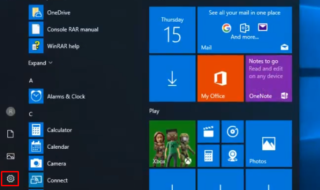Software development has become a crucial component of our lives, and we rely on it in practically every part of our activities. When it comes to software development security, developers need to follow industry best practices to reduce any vulnerabilities in your code, keep it from being abused by hackers and other cybercriminals, and protect users’ privacy.
This article will offer key practices that you should follow while working on the software packages.
Contents
Develop a DevSecOps Mindset and Culture
DevSecOps by JFrog requires a culture and attitude in which diverse cross-functional teams work towards the same objective of continuing software security. When it comes to fostering this mentality, you should start with a few self-driven teams. Your strategy initiatives must serve as a guidepost for them as they seek to incorporate a DevSecOps culture into their day-to-day operations while balancing scale, speed, and security.
When the pilot teams begin to see the tangible benefits of DevSecOps, they will likely become role models for other teams that want to follow in their footsteps and adopt the same practices. It is critical to remember that developing a DevSecOps culture and mindset necessitates working in iterations and gradually spreading from specialized teams to the whole company.
Keep Security Standards Up to Date

As the threat environment evolves, a continuous method is required to give the development team a clear picture of the security requirements. When new threats develop, the security risk documentation must be updated to ensure that the program is protected against these new attacks, which are often smarter than previous threats.
Secure Your Development Atmosphere
If the environment in which you develop software is not secure, it will be difficult to trust the code that arises from that environment. These environments must have an acceptable degree of security, but they should also aid rather than impede the development process. Fortunately, it is possible to design a system that is not only secure but also valuable to software engineers.
Consider Threat Modelling
Modeling possible risks is a critical step that may improve both speed and security. It can predict the degree, location, and threat of security vulnerabilities and take preemptive efforts to remedy them before they become an issue. This SDLC best practice allows developers to consider possible security concerns early in the development process when it is simpler to make modifications to the source code to fix vulnerabilities.
Use Code Reviews to Identify Potential Security Threats
The goal of code reviews is to help developers find and solve security vulnerabilities, allowing them to avoid making repeated mistakes. The development of safe software architectures is a critical component. Put yourself in a defensive mindset while writing code so that you can write the least amount of code possible. In addition, you must test your code and develop unit tests for those areas that give you concern.
After making any changes to the source code, you should always double-check to see whether the changes introduced any new security problems. Furthermore, a review of the security requirements is required to ensure that safe coding best practices are followed throughout the whole development process.
Automate Your Business Processes
The DevOps technique is built on the idea of speed. The most essential goal of a system that uses continuous integration and deployment, also known as CI/CD, is to get the code out of the building and into production as soon as feasible. It is strongly advised that you automate the security system. Because companies send new code versions into production fifty times each day for a single app, security protections and testing must be included and automated as early and as often as feasible throughout the development lifecycle.
When you automate tools and processes, you guarantee that they are used consistently and reliably. It is critical to distinguish between components of security operations and processes that may be automated and those that need human intervention. The implementation of a SAST tool inside a pipeline, for example, may be entirely automated; nevertheless, physical labor is necessary for penetration testing and threat modeling, so these procedures cannot be automated.
Stay Flexible and Proactive
Astute software engineers examine vulnerabilities, acquiring an understanding of their underlying causes, identifying patterns, preventing events from recurring, and keeping their SDLC up to speed with new information. They also keep an eye out for developing trends and stay up-to-date on industry standards. The industry is in a perpetual state of flux, and security best practices are always changing. It is critical to look forward to seeing what is coming, to keep learning, and to identify new ways to secure the software development process.



